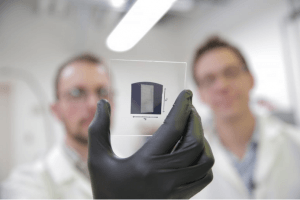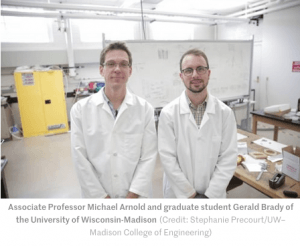
They’re not the first transistors created using carbon nanotubes (CNTs), but researchers at the University of Wisconsin-Madison (UW-Madison) claim their new carbon nanotube transistors are the first to outperform the best silicon transistors available today. With higher current capabilities and greater switching speeds, these carbon nanotube semiconductors promise to provide next-generation electronics with higher-performance whilst consuming far less power.
According to the UW-Madison researchers, their breakthrough could result in carbon nanotube transistors eventually replacing silicon transistors, and provide the on-going performance gains required by the computer industry to meet consumer demand. Based on measurements performed by the researchers on single nanotube transistors, these devices should be able to operate at speeds five times greater or use five times less energy than silicon transistors in the same applications.
“This achievement has been a dream of nanotechnology for the last 20 years,” says Professor Michael Arnold, co-leader of the UW-Madison research team. “Making carbon nanotube transistors that are better than silicon transistors is a big milestone. This breakthrough in carbon nanotube transistor performance is a critical advance toward exploiting carbon nanotubes in logic, high-speed communications, and other semiconductor electronics technologies.”
Created from single-atom sheets of graphene rolled into tubes, CNTs enable the creation of a three-dimensional structure from a single-dimension sheet of carbon. Specifically turning these CNTs into field effect transistors (FETs), the microscopic dimensions of the new transistors enable rapid changes of the current flow moving across them.
As FETs operate by modulating what is known as a charge concentration along channels between electrodes to produce current flow, so increasing the voltage applied to a particular electrode increases amplification in a circuit, so the new UW-Madison semiconductors produce a lot of current flow around 1.9 times higher than silicon transistors across a relatively small area. This behavior could provide significant gains in CNT FET-based wireless communications devices.

Before the researchers were able to achieve the high gains they sought, though, they first had to overcome the impediments faced by other researchers in producing pure carbon nanotubes and avoid metallic impurities that disrupt the semiconducting capabilities of CNTs. To do this, the UW–Madison team employed a technique known as floating evaporative self-assembly, in which polymers are used to encapsulate and isolate the CNTs and then align and deposit them on a substrate with exact spacings.
“We’ve identified specific conditions in which you can get rid of nearly all metallic nanotubes, where we have less than 0.01 percent metallic nanotubes,” said Professor Arnold.
After the selective aligning and deposition of the CNTs, the researchers then baked the nanotubes in a vacuum oven to remove the insulating polymer and allow the CNTs to conduct. Any remaining residues were removed from the nanotubes with solvent prior to their oven treatment.
“In our research, we’ve shown that we can simultaneously overcome all of these challenges of working with nanotubes, and that has allowed us to create these groundbreaking carbon nanotube transistors that surpass silicon and gallium arsenide transistors,” said Professor Arnold. “There has been a lot of hype about carbon nanotubes that hasn’t been realized, and that has kind of soured many people’s outlook. But we think the hype is deserved.”
Selectively-aligning CNTs is a crucial step in providing the ability to fabricate FETs in commercial quantities quickly and easily. And, whilst other unique methods have been employed to produce accurately aligned graphene semiconductor materials (even using strands of DNA, in one instance), the method employed by the UW-Madison researchers is, they claim, scalable to high-quantity production levels.
Whilst research conducted by other institutions has concentrated on increasing the speed at which graphene-based transistors operate, the UW-Madison team’s on-going research will look at ways to create more efficient high-performance radio frequency amplifiers that could be used, for example, to better increase cellphone signals.
